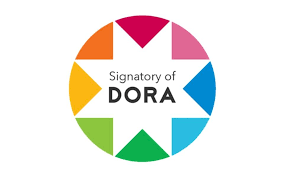Comprensión y manejo de la diabetes mellitus: una revisión bibliográfica
DOI:
https://doi.org/10.56124/sapientiae.v7i15.008Palabras clave:
Diabetes Mellitus, Management, Epidemiology, pathophysiologyResumen
La prevalencia de Diabetes Mellitus tipo 1 y 2 ha ido en aumento en los últimos años y es una carga de morbilidad significativa. El objetivo de la presente investigación fue realizar una revisión bibliográfica sobre la diabetes mellitus, desde la epidemiología de la enfermedad hasta las estrategias de tratamiento y manejo. Se revisaron bases de datos como PubMed, Scopus y Web of Science, con artículos publicados desde 2019 hasta 2024 y se utilizaron como estrategia de búsqueda términos MeSH: Medical Subject Headings. A su vez, como criterios de inclusión se estudiaron y analizaron estudios originales, guías prácticas clínicas y resultados de proyectos publicados en inglés y español. De acuerdo con los datos recopilados, la diabetes mellitus es un fenómeno con prevalencia global y pronósticos de aumento del 46 % en 2045. La investigación realizada permitió identificar referencias teóricas y conceptuales que sustentan la diabetes mellitus, su fisiopatología, manejo y prevención. Se demostró el enfoque integral de las terapias actuales, que incluye el control glucémico, el cambio de estilo de vida y la prevención de la morbilidad y permiten enfrentar los factores de riesgo a los que se expone desde una personalización de la intervención. Las tecnologías novedosas como la monitorización continua del nivel de glucosa y las terapias basadas en incretinas, muestran resultados positivos en el tratamiento de la enfermedad.
Descargas
Citas
Ahlqvist, E., et al. (2021). Novel subgroups of adult-onset diabetes and their association with outcomes: a data-driven cluster analysis of six variables. The Lancet Diabetes & Endocrinology, 9(6), 361-372.
Aune, D., et al. (2020). Physical activity and the risk of type 2 diabetes: a systematic review and dose-response meta-analysis. European Journal of Epidemiology, 35(9), 901-912.
Battaglia, M., et al. (2022). Introducing the Endotype Concept to Address the Challenge of Disease Heterogeneity in Type 1 Diabetes. Diabetes Care, 45(1).
Beck, R. et al. (2021). Effect of Continuous Glucose Monitoring on Glycemic Control in Adults with Type 2 Diabetes Not Using Insulin: The MOBILE Randomized Clinical Trial. JAMA, 325(22), 2262-2272.
Beck, R. et al. (2021). (2017). Validation of time in range as an outcome measure for diabetes clinical trials. Diabetes Care, 40(6), 839-842.
Bekiari, E., et al. (2018). Artificial pancreas treatment for outpatients with type 1 diabetes: systematic review and meta-analysis. BMJ, 361, k1310.
Bian, R. R., et al. (2021). The effect of technology-mediated diabetes prevention interventions on weight: a meta-analysis. Journal of Medical Internet Research, 23(3), e19688.
Buzzetti, R., Zampetti, S., & Maddaloni, E. (2020). Adult-onset autoimmune diabetes: current knowledge and implications for management. Nature Reviews Endocrinology, 16(12), 702-716. https://doi.org/10.1038/s41574-020-00429-6.
Cosentino, F., et al. (2020). 2019 ESC Guidelines on diabetes, pre-diabetes, and cardiovascular diseases developed in collaboration with the EASD. European heart journal, 41(2), 255-323.
Danne, T., et al. (2020). Hypoglycaemia in adults with type 1 diabetes: a consensus statement on diagnosis and management. Diabetic Medicine, 37(5), 744-757.
Davies, M, et al. (2022). Management of hyperglycemia in type 2 diabetes, 2022. A consensus report by the American Diabetes Association (ADA) and the European Association for the Study of Diabetes (EASD). Diabetes care, 45(11), 2753-2786.
Domínguez, E. (2013). Desigualdades sociales y diabetes mellitus Social. Revista Cubana de Endocrinología;24(2):200-213 http://scielo.sld.cu 200.
Eizirik, D. L., Pasquali, L., & Cnop, M. (2020). Pancreatic β-cells in type 1 diabetes: stressed to death. Nature Reviews Endocrinology, 16(6), 287-298. https://doi.org/10.1038/s41574-020-0337-7.
Fleming, G. et al. (2020). Diabetes digital app technology: benefits, challenges, and recommendations. A consensus report by the European Association for the Study of Diabetes (EASD) and the American Diabetes Association (ADA) Diabetes Technology Working Group. Diabetes care, 43(1), 250-260.
Galicia-Garcia, et al. (2020). Pathophysiology of type 2 diabetes mellitus. International journal of molecular sciences, 21(17), 6275.
Gerstein, H. et al. (2019). Dulaglutide and cardiovascular outcomes in type 2 diabetes (REWIND): a double-blind, randomised placebo-controlled trial. The Lancet, 394(10193), 121-130.
Giugliano, D., Maiorino, M., Bellastella, G., & Esposito, K. (2019). GLP-1 receptor agonists for preventing and treating cardiorenal outcomes in type 2 diabetes: an updated meta-analysis including the REWIND and PIONEER 6 trials. Diabetes, Obesity and Metabolism, 21(11), 2576-2585.
Halban. P, et al. (2023). Gene-environment interactions in diabetes: Progress, pitfalls, and prospects. Diabetes, 72(1), 20-38. https://doi.org/10.2337/db23-0201.
Hattersley, A. & Patel, K. (2022). Precision diabetes: Understanding the variability in diabetes. Diabetologia, 65(5), 775-783. https://doi.org/10.1007/s00125-022-05621-4.
Haw, J. S., et al. (2021). Long-term sustainability of diabetes prevention approaches: A systematic review and meta-analysis of randomized clinical trials. JAMA internal medicine, 181(8), 1040-1055.
Herold, K. et al. (2019). An anti-CD3 antibody, teplizumab, in relatives at risk for type 1 diabetes. New England Journal of Medicine, 381(7), 603-613.
Herold, K. et al. (2019). (2020). An anti-CD3 antibody, teplizumab, in relatives at risk for type 1 diabetes. New England Journal of Medicine, 383(8), 711-720. https://doi.org/10.1056/NEJMoa2001.
International Diabetes Federation. (2019). IDF Diabetes Atlas, 9th Edition. Retrieved from [IDF](https://www.diabetesatlas.org).
Khan, M. et al. (2020). Epidemiology of type 2 diabetes – Global burden of disease and forecasted trends. Journal of Epidemiology and Global Health, 10(1), 107-111. https://doi.org/10.2991/jegh.k.191030.001.
Knowler, W. C. ,et al. (2019). HbA1c as a predictor of diabetes and as an outcome in the diabetes prevention program: a randomized clinical trial. Diabetes care, 42(9), 1639-1646.
Luo, J., & Liu, J. (2023). Machine learning in diabetes research: Advances and challenges. Computational and Structural Biotechnology Journal, 21, 305-315. https://doi.org/10.1016/j.csbj.2023.01.009.
Mahajan, A., et al. (2022). Multi-ancestry genetic study identifies novel loci influencing type 2 diabetes and key pathways for disease pathophysiology. Nature Genetics, 54(4), 535-545. https://doi.org/10.1038/s41588-022-01033-3.
Mayer-Davis, E. et al. (2021). Incidence trends of type 1 and type 2 diabetes among youths, 2002-2015. New England Journal of Medicine, 384(5), 421-429. https://doi.org/10.1056/NEJMoa1901.
Patterson, C. et al.(2019). Worldwide estimates of incidence, prevalence, and mortality of type 1 diabetes in children and adolescents: Results from the International Diabetes Federation Diabetes Atlas, 9th edition. Diabetes Research and Clinical Practice, 157, 107842. https://doi.org/10.1016/j.diabres.2019.107842.
Perkovic, V., et al. (2019). Canagliflozin and Renal Outcomes in Type 2 Diabetes and Nephropathy. New England Journal of Medicine, 380(24), 2295-2306.
Petersen, M. C., et al. (2017). Insulin receptor Thr1160 phosphorylation mediates lipid-induced hepatic insulin resistance. The Journal of Clinical Investigation, 127(11), 3967-3978.
Pociot, F., & Lernmark, Å. (2021). Genetic risk factors for type 1 diabetes. The Lancet, 387(10035), 2331-2339. https://doi.org/10.1016/S0140-6736(21)00396-5.
Powers, A. et al. (2021). COVID-19 and diabetes: A collision and collusion of two diseases. Diabetes, 70(12), 2552-2565. https://doi.org/10.2337/dbi21-0027.
Rawshani, A., et al. (2020). Risk Factors, Mortality, and Cardiovascular Outcomes in Patients with Type 2 Diabetes. New England Journal of Medicine, 382(2), 130-141.
Riddle, M. et al. (2021). Consensus report: definition and interpretation of remission in type 2 diabetes. Diabetes Care, 44(10), 2438-2444.
Saeedi, P., et al. (2019). Global and regional diabetes prevalence estimates for 2019 and projections for 2030 and 2045: Results from the International Diabetes Federation Diabetes Atlas, 9th edition. Diabetes Research and Clinical Practice, 157, 107843.
Samuel, V., & Shulman, G. (2021). Nonalcoholic fatty liver disease as a nexus of metabolic and hepatic diseases. Cell Metabolism, 33(12), 2355-2375. https://doi.org/10.1016/j.cmet.2021.11.002.
Stumvoll, M., Goldstein, B. J., & van Haeften, T. W. (2022). Type 2 diabetes: Principles of pathogenesis and therapy. Lancet, 365(9467), 1333-1346. https://doi.org/10.1016/S0140-6736(22)60444-9.
Sun, H.,et al. (2022). IDF Diabetes Atlas: Global, regional and country-level diabetes prevalence estimates for 2021 and projections for 2045. Diabetes research and clinical practice, 183, 109119.
Tabák, A. & Wittmann, I. (2021). Community-based screening programs for type 2 diabetes: Recent evidence. Current Diabetes Reviews, 17(3), 329-337.
Umpierrez, G., & Korytkowski, M. (2023). Diabetic emergencies — ketoacidosis, hyperglycaemic hyperosmolar state and hypoglycaemia. Nature Reviews Endocrinology, 19(2), 78-89.
Vazquez, G., et al (2021). Comparison of body mass index, waist circumference, and waist/hip ratio in predicting incident diabetes: A meta-analysis. Epidemiologic Reviews, 29(1), 115-128. https://doi.org/10.1093/epirev/mxm008.
Vounzoulaki, E., et al. (2020). Progression to type 2 diabetes in women with a known history of gestational diabetes: Systematic review and meta-analysis. BMJ, 369, m1361. https://doi.org/10.1136/bmj.m1361.
Veres, A., et al. (2019). Charting cellular identity during human in vitro β-cell differentiation. Nature, 569(7756), 368-373.
World Health Organization. (2020). Global report on diabetes. World Health Organization. https://www.who.int/publications/i/item/9789241565257.
Yoshihara, E., O'Connor, C., & Gasser, E. (2020). Monitoring pancreatic β-cell stress in type 1 diabetes. Cell Metabolism, 31(2), 217-229. https://doi.org/10.1016/j.cmet.2020.01.003.
Zelniker, T. et al. (2019). SGLT2 inhibitors for primary and secondary prevention of cardiovascular and renal outcomes in type 2 diabetes: a systematic review and meta-analysis of cardiovascular outcome trials. The Lancet, 393(10166), 31-39.
Zelniker, T. et al. (2019). Sodium-Glucose Cotransporter 2 Inhibitors for the Treatment of Heart Failure: A Position Paper From the Heart Failure Association of the European Society of Cardiology. European Journal of Heart Failure, 24(6), 925-947.

Publicado
Cómo citar
Número
Sección
Licencia
Derechos de autor 2024 Revista Científica Multidisciplinaria SAPIENTIAE. ISSN: 2600-6030

Esta obra está bajo una licencia internacional Creative Commons Atribución-NoComercial-CompartirIgual 4.0.

2.jpg)

















